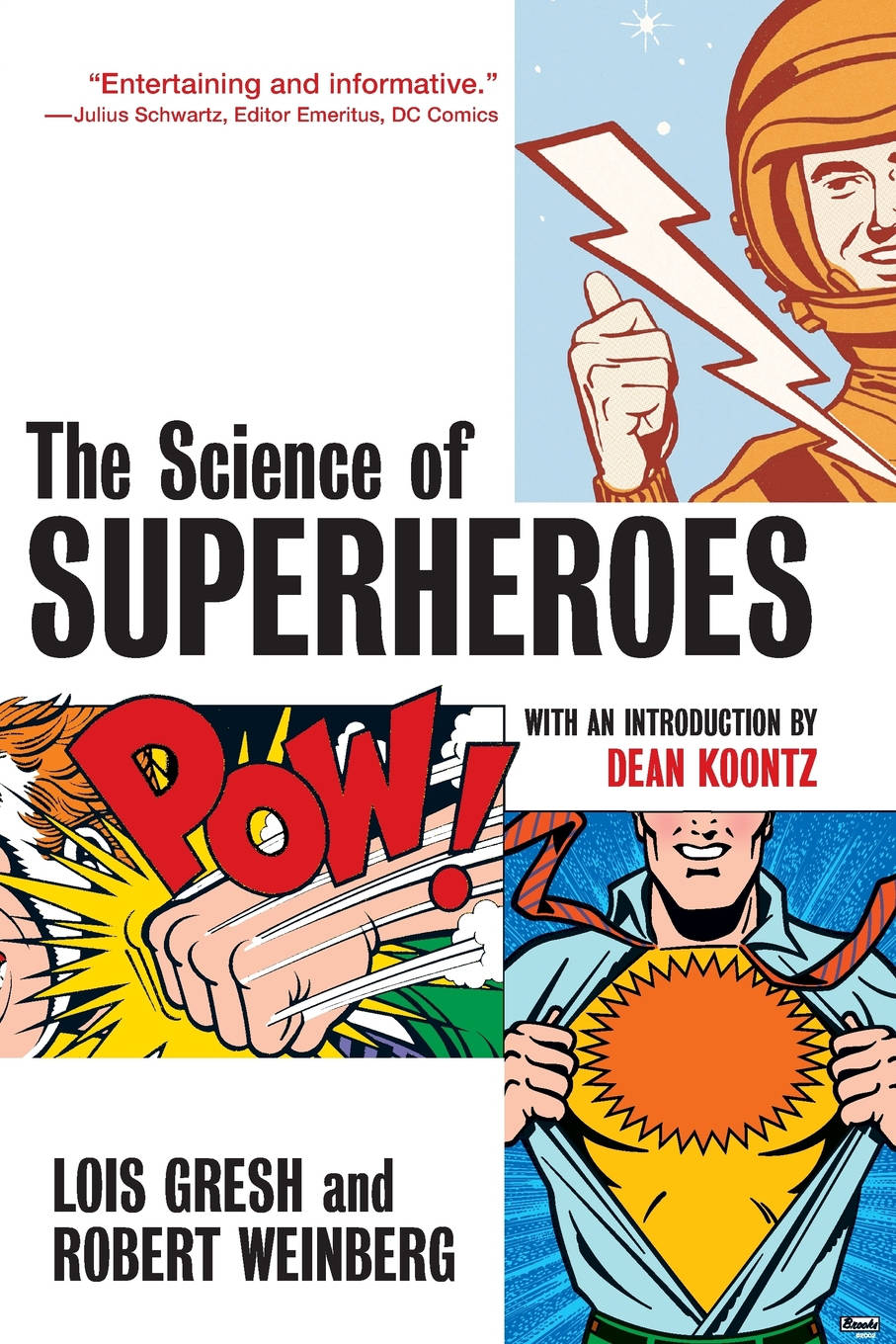By Lois Gresh and Robert Weinberg
I’ve been reading comic book superheroes for a long time now. An unrelated fact is that I trained as a scientist (I have a PhD in biochemistry). In all that time, I have never had a problem with the use of science in superhero comic books. Science is for explaining the wonders and mysteries of the universe; comic books exist to entertain me, with a side order of informing me when appropriate. When I saw this book in the library, I wanted to read it because I couldn’t understand quite why it existed – they do know that comic books are fictional, right?
The title is a little misleading – this isn’t a book explaining how superheroes can work within the constraints of the laws of science. It examines aspects of science that are related to aspects of superheroes. This is a significant difference, but it makes for an interesting read. The first chapter was particularly fascinating, as it discusses the Drake equation (which provides an estimate of the number of intelligent species in our galaxy) to demonstrate the possibility of Krypton, before talking about a book called Rare Earth, which examined the various factors in the Drake equation and show that, instead of many planets with life on it, habitable planets are quite rare – the habitable zone is more complicated, possibly requiring a gas giant like Jupiter to exist as a magnet for comets; for biological life to evolve requires three billion years, which requires a G2 type star (a lifetime of ten billion years) that are not very common. The authors use this to explain why Jor-El sent his son to Earth – there was no other choice. They then go on to explain that Krypton can’t exist because the size it would need to be for Superman to be as strong as he is on Earth is impossibly large for a planet with that gravity to exist. Fun stuff.
The next chapter talks about cosmic rays and gamma radiation, stating the obvious fact that the Hulk wouldn’t exist, but then proposing a theory for the Green Fluorescent Protein version of the Hulk, based on real science anabolic steroids and genetic manipulation. The third chapter talks about the possible contents of Batman’s utility belt and the basis behind the Cataclysm storyline, which is a bizarre choice of subject among all the various facets of Batman. The fourth chapter talks about underwater superheroes, which takes in Plato’s description of Atlantis and the aquatic ape theory of the evolution of man (which states that early humans spent more time in water than we do now, something I hadn’t heard of before), before talking about the mechanics of living underwater (breathing fluids and withstanding pressure).
The fifth chapter talks about Spider-Man – how almost none of the attributes of ‘spider powers’ relate to actual spiders, before discussing clones because of the infamous Clone Saga. The sixth chapter uses the Green Lantern concept to discuss black holes in detail as a possible source for the infinite energy required to power the Green Lantern Corps. The next chapter uses Ant Man and the Atom as starting points for discussing the Square Cubed Law in relation to shrinking and growing, with an aside for atomic structure and some quantum mechanics. The eighth chapter talks about the Flash: after stating that stories with someone moving that fast would be really boring because criminals wouldn’t be any sort of challenge, they examine the impossibility of moving at the speeds mentioned in the comics. This involves discussion of the calories required to power the speed, not being able to see or hear properly, causing sonic booms, the trouble with momentum and a thorough discussion of the speed of light – if the Flash actually moved at the speed of light, he would have infinite mass (i.e. all the mass in the universe), which is impossible.
The ninth chapter uses the X-Men to talk about the theory of evolution (giving a good kicking to Creationism while they are it); the tenth chapter talks about science fiction comic books in general, and how they ignore science for the sake of telling a fun story in a short number of pages, and a mention of the Grandfather Paradox when discussing time travel (which allows for a section on Einstein-Rosen bridges). A lot of this might sound like nerdy nitpicking, but that’s not what the book is about – it just wants to ‘edutain’ on the elements of science involved in the comic books they love. They leave the final chapter to talk about Carl Barks and his use of accurate science in stories of Donald Duck and Uncle Scrooge, just to prove that they’re not haters.
The last chapter highlights the love the authors have for comic books – the science may invalidate the accuracy but it doesn’t stop the enjoyment. Each chapter has a very informative introduction to the characters and the comics in a historical framework, providing excellent overviews of the development of the science fiction superheroes of the Silver Age. The book is a very enjoyable combination of superheroes and proper science, essayed in a highly readable style.




